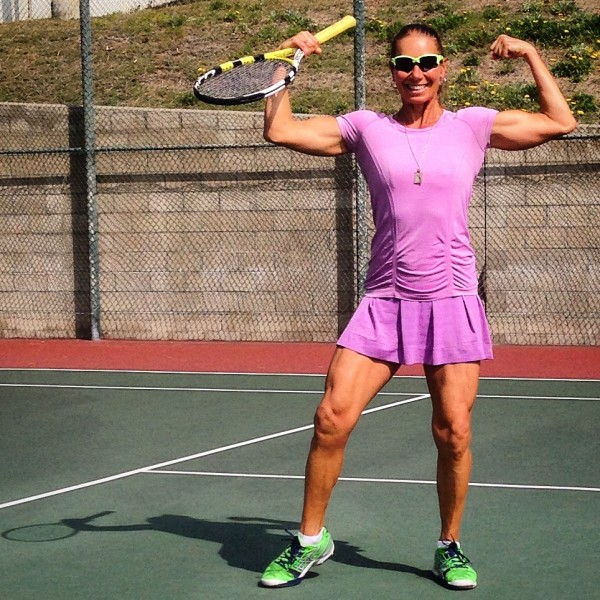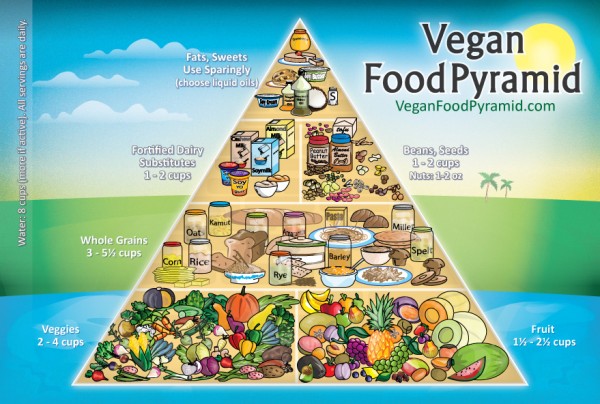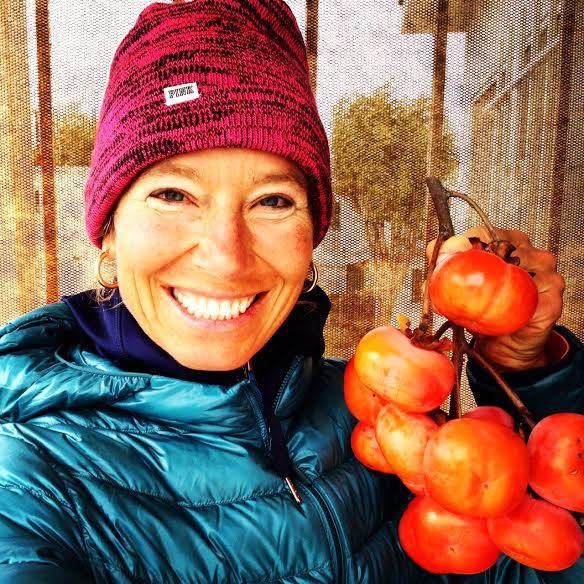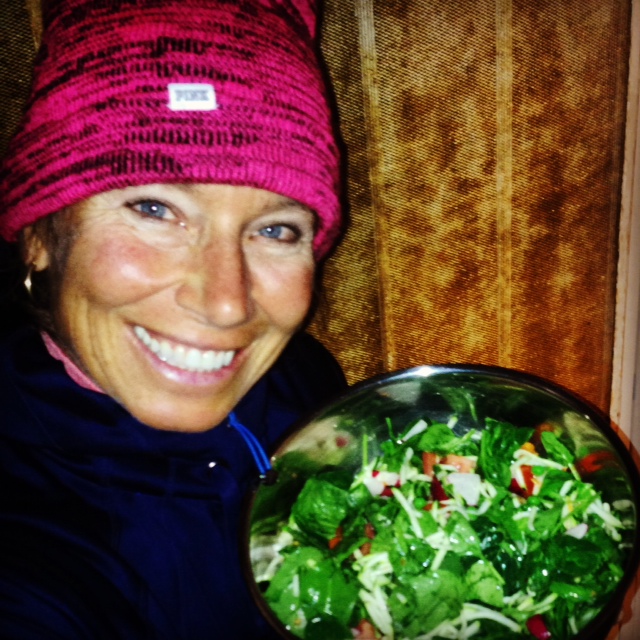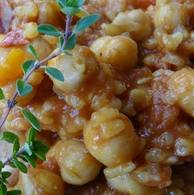Most of us are familiar with the glycemic index, and many of us believe that it is important to eat low glycemic index foods. A fewer of us are familiar with Dr. David Jenkins (who is like a Michael Jordan in the nutritional science world). Dr. Jenkins of the University of Toronto invented the glycemic index back in 1981, in attempt to manage diabetes through food choices. He and his research team created a detailed list that ranked foods according to the effect that they had on blood sugar.
Dr. Jenkins’ glycemic index changed the diet industry, having effect more far-reaching that we could have imagined. His research inspired all the diets such as Atkins, The Zone, South Beach, Sugar Busters, the G.I. Diet, and many other popular lower-carb diets.
We can say that Dr. Jenkins had a severe influence on how and what we eat. And now, over 30 years later, he wants us to radically rethink our diets once again. This time, he wants us to give up meat, fish and dairy. He wants us to embrace veganism, not just for our individual health, but for the environment and animal welfare. Earlier this year, Dr. Jenkins became the first Canadian recipient of the Bloomberg Manulife Prize for the Promotion of Active Health. Yet, he meets much more resistance this time than back in time with the glycemic index diets.
For years, we’ve been making dietary decisions based on the calories, fat, fiber or vitamins and minerals that foods contain, Dr. Jenkins says. But, with increased concerns over freshwater supply, loss of biodiversity and climate change, it’s time to make the shift away from animal foods and toward a plant-based diet.
It’s easier to follow a healthy diet if you have more reasons to do so.
A properly planned plant-based diet – one that avoids all animal products, including meat, poultry, fish, eggs and dairy – is incredibly good for your health. Studies have shown that plant-based eaters are thinner and have lower cholesterol and blood-pressure levels, a reduced risk of coronary heart disease, Type-2 diabetes and lower cancer rates – especially colorectal cancer.
Foods such as fruits, vegetables, whole grains, beans and lentils, nuts and seeds offer a wealth of nutrients, fiber and phytochemicals that have amazing health effects. Vegan diets are usually higher in fiber, magnesium, folate, vitamins C and E, iron and phytochemicals, while they tend to be lower in calories, sodium, saturated fat and cholesterol.
Athletes and vegan diets
Many athletes wonder if a vegan diet can provide enough protein to fuel their workouts. Often this is a wrong question. You fuel your workouts with carbohydrates, and you use the protein to rebuild your muscles tissue. If you eat enough carbohydrates (which you generally do on a vegan diet), you most often get enough protein to recover and repair.
Because vegans avoid eating all animal foods including meat, poultry, fish, eggs and dairy, they rely on plant food protein, such as beans, lentils, tofu, tempeh, soymilk, nuts and seeds to get the bulk of their protein. Vegetables and grains – especially quinoa, kamut, millet and amaranth – provide some protein, too.
Click to see a table with protein amounts of different plant sources.
Many people think that a meat-free diet won’t offer enough protein to meet an athlete’s increased requirement. Extra protein supplies amino acids (building blocks of protein) needed to repair muscle damage that occurs during exercise and to support muscle building.
The good news: a vegan diet can easily provide all the protein your body needs for top athletic performance. That’s certainly the case for many professional athletes including Carl Lewis, Mike Tyson, Rich Roll, Brendan Brazier, Venus Williams, and other football players, martial artists, power athletes and more.
Protein-intake recommendations for non-vegetarian athletes range from 1.2 to 1.7 grams of protein per kilogram of body weight a day. That’s twice as much protein – or more – than sedentary people need each day (0.8 grams per kilogram body weight). A 175-pound (79.5 kg) male athlete, then, needs 95 to 135 grams of protein each day.
One and the most important thing for protein to support your muscle health is that you have to eat enough calories to meet (or exceed) your daily calorie requirements. If your calorie intake is too low, some of the protein in your diet will be used for energy purposes rather than to build or repair muscle tissue.
If you do make the switch to a vegan diet, monitor your weight. If you find that you are losing weight, you probably don’t eat enough calories and you have to eat more. That’s good news, right?
What else you need…
Besides protein, for top athletic performance you also need iron, which helps red blood cells supply oxygen to working muscles. Include in your daily diet such iron-rich plant foods as lentils, chickpeas, soybeans, pumpkin seeds, cooked spinach, cooked collard greens, fortified breakfast cereals and blackstrap molasses.
Vitamin B12, found only in animal foods, is essential for making red blood cells and proper nerve function. You’ll find B12 in fortified foods including non-dairy milks (soy, rice, almond, hemp), soy burgers and breakfast cereals as well as nutritional yeast. To ensure you get enough B12, take a multivitamin or separate B12 supplement. Even meat eaters can be low on B12, so this is not really a big issue to worry about.
Vitamin D is important for athletes and non athletes, too. Both meat eaters and vegans may lack vitamin D because of the lack of sunshine and overly protecting the skin from the sun rays. Good levels of vitamin D in the body are associated with improved muscle strength, exercise capacity and physical performance. Get your levels checked, especially if you are not in the sunshine a lot. In the fall and winter, when the sun isn’t strong enough to produce vitamin D in our skin, adults should take a daily vitamin D supplement supplying 1,000 IU. Some people may need more vitamin D to maintain a sufficient blood level.
Too much time and effort to cook vegan?
Many people argue (not so rightly) that vegan diets demand an unreasonable amount of time on food preparation. I beg to pardon. I found that it is much simpler to eat and cook vegan. Because even meat eaters eat some vegetables and grans, so the preparation is there too. On a top of it, they need to take a lot of time and care to prepare the animal products correctly. On a vegan diet, you can eat a lot of vegetables and fruits raw, which doesn’t take any preparations. I think once you figure out the technicalities of what and how to eat, you will find that it is extremely easy to prepare vegan meals.
To solve all the technicalities and details, you can help yourself with The Athlete’s Simple Guide to a Plant-Based Lifestyle 🙂
Easy transition
Here are some tips on making the transition, by a registered dietitian Leslie Beck: (originally featured in The Globe Unlimited)
Start with the familiar
Identify plant-based meals you are already eating (e.g., chickpea curry, veggie burgers, tofu stir-fry, black-bean tacos or a green salad with lentils) and rotate them into your menu more often. Even a breakfast of fruit and whole-grain toast spread with almond butter counts as a plant-based meal. And if you haven’t already, make it routine by instituting “meatless Monday.”
Shift the focus of your plate
Downsize the importance of meat, poultry, fish and eggs at meals. Three quarters of your plate should be filled with plant foods such as grains, legumes, fruits and vegetables. Aim for all your meals to be 75-per-cent plant-based.
To do so, add more plant foods to your meals. Increasing the proportion of plant foods at your meals means you’ll be cutting back on your intake of animal foods.
Eliminate animal foods that you don’t eat often
Think about your diet. Is there an animal food – or two – that you eat infrequently? Red meat? Eggs? Milk? This will be the easiest food to drop completely since you’ll hardly miss it. For many of my clients – myself included – red meat is the first to go.
Eat plant-based snacks
Vegan snack ideas include fruit and nuts, raw vegetables and hummus, whole-grain crackers and nut or seed butter, bean soup, soy lattes, soy smoothies and plant-based energy bars such as Larabar, Kind Bar, Simply Protein Bar, Vega Snack Bar and Genuine Health’s Vegan Proteins+ Bar.
Look beyond dairy
Fortified plant beverages made from soy, rice, almond, hemp, oats or coconut provide just as much calcium, B12 and vitamin D as cow’s milk. Only soy beverages, however, are a good source of protein matching what’s found in milk (8 grams a cup).
To cut added sugar, choose an unsweetened plant beverage. Use a milk alternative any place you’d normally use dairy milk: over cereals in smoothies and shakes, in French toast and pancake recipes, in cream-style soups and in coffee and tea.
Consider convenience
Keep it simple when starting out. If cooking plant-based meals from scratch seems overwhelming to you, take advantage of vegetarian convenience foods such as bean soups or frozen entrees such as tofu lasagna, pad thai, lentil curry, vegetable pot pie, rice and bean burritos or soy-cheese pizzas. Companies such as Yves Veggie Cuisine and Loblaws offer a variety of protein-rich, meat-free patties, burgers, crumbles and vegetarian “chicken” products that can be used in place of meat and poultry in many recipes.
I’m not suggesting you make these foods steady fare. While they don’t have the saturated fat and cholesterol found in animal-based foods, many can be high in sodium. When you do eat convenience foods, read labels to choose ones that are lower in sodium.
Rethink your restaurant choices
One of the easiest ways to go vegan when dining out is to explore ethnic cuisine. Restaurants that specialize in Indian, Thai, Japanese, Chinese, Mexican and Middle Eastern cuisine offer a variety of plant-based meals.
Explore vegan cookbooks
Browse the vegetarian-cookbook section at the local library or bookstore to find one you like. Then begin experimenting with plant-based foods and recipes. Or, buy a magazine devoted to vegan cooking (e.g., VegNews, Vegetarian Times) to help you build a repertoire of vegan meals.
~~~~~~~~~~~
If you would like to explore more plant-based nutrition for athletes, how to easily transition, what problems to avoid easily, what foods to eat, and many simple recipes, look at The Athlete’s Simple Guide to a Plant-Based Lifestyle on Amazon.com.
I think (and hope) you will enjoy it a lot.
.

